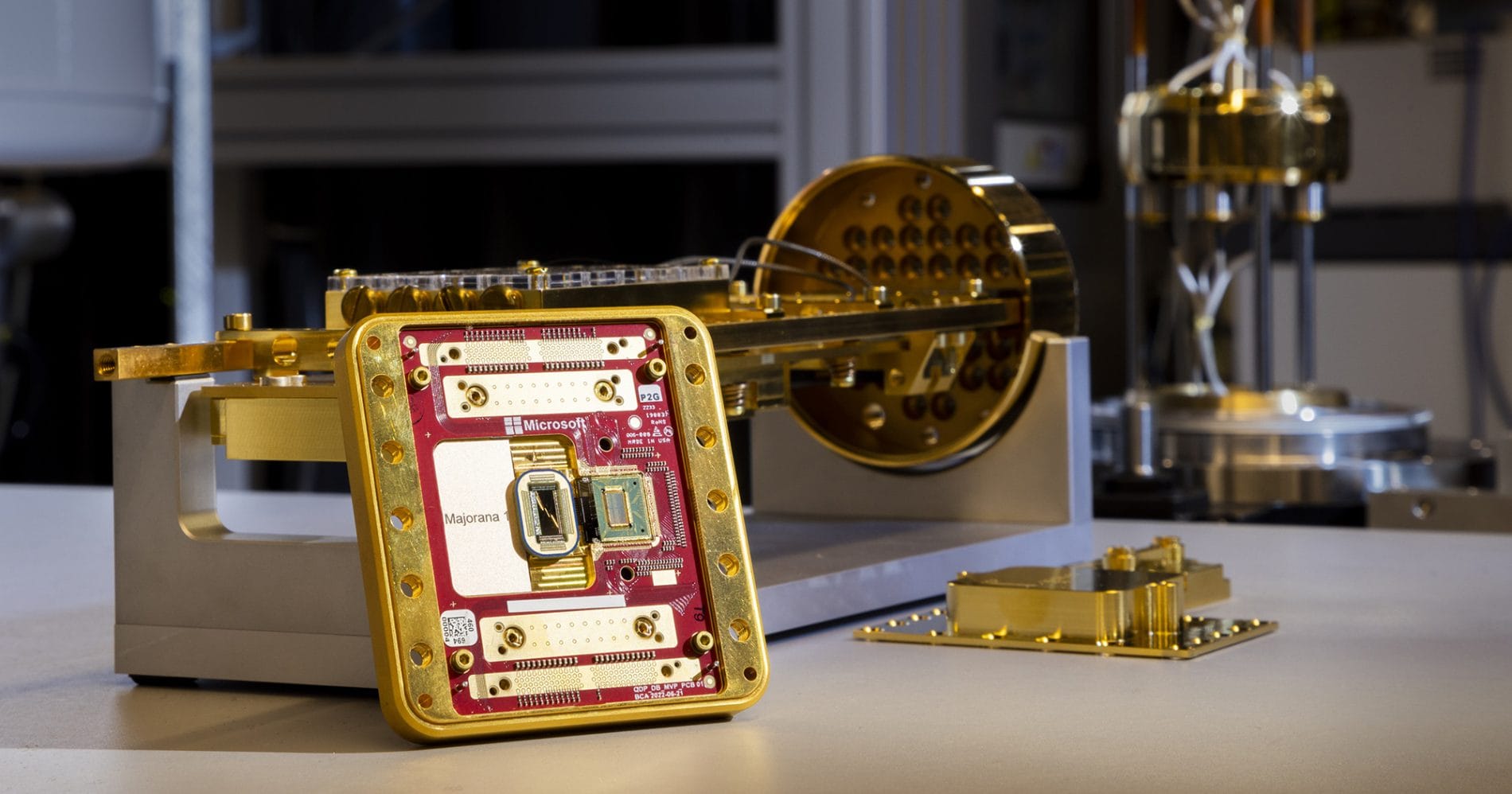How Microsoft’s New State of Matter in Quantum Computing Could Challenge Bitcoin’s Security

Microsoft’s recent unveiling of a groundbreaking state of matter has sent ripples through the tech world, and its potential to disrupt Bitcoin’s security framework through quantum computing. This isn’t just another incremental step in technology; it’s a leap into territory that could reshape how we view cryptography and cryptocurrencies.
The tech giant has harnessed a “topological superconductor,” a phase of matter (distinct from solid, liquid, or gas, defined by quantum and topological properties) that stands apart from the familiar trio most people know. By manipulating subatomic Majorana fermions within this material, Microsoft engineers have created qubits, the building blocks of quantum computing, powering their Majorana 1 quantum chip. This innovation promises to tackle complex challenges like climate modeling or molecular analysis, but it also casts a shadow over the cryptographic foundations that keep Bitcoin and other cryptocurrencies secure.
Bitcoin relies on two key cryptographic systems, SHA-256 and ECDSA, to protect its blockchain from threats like double-spending or unauthorized control. SHA-256 acts as a digital fingerprint, ensuring that transactions and blocks are unique and verifiable. This hash function’s strength lies in its resistance to reverse-engineering on traditional computers, creating a barrier against fraud. Meanwhile, ECDSA ties public addresses to private keys, allowing users to authenticate transactions securely. The trust in Bitcoin’s network stems from the immense computational effort required to break these systems, a task far beyond the reach of classical machines. However, Microsoft’s quantum computing breakthrough introduces a new variable that could disrupt this balance.
Never Miss Important News
Sign up and be the first to know when we publishThe topological superconductor at the heart of Microsoft’s Majorana 1 chip enables qubits that operate in ways classical computers can’t match. For SHA-256, a quantum attack using Grover’s algorithm could slash the time needed to crack its defenses, making what was once an impossible feat disturbingly plausible. Similarly, ECDSA faces a threat from Shor’s algorithm, which could unravel the elliptic curve discrete logarithm problem in a fraction of the time it takes today’s systems. While the scale of guesses required to breach these protocols remains astronomical for conventional hardware, quantum computers equipped with materials like Microsoft’s could bypass those limitations, jumping to solutions in a fraction of the time.
Microsoft’s Quantum Leap and Bitcoin’s Future
Satya Nadella, Microsoft’s chairman and CEO, framed this discovery as a transformative moment, reflecting on how it rewrites our understanding of matter itself. After nearly two decades of research, the company has unlocked a new class of materials called topoconductors, paving the way for a quantum processor that could arrive within years, not decades. These qubits, remarkably small at 1/100th of a millimeter, offer a path to a million-qubit system compact enough to fit in your hand yet powerful enough to outstrip the combined might of every computer on Earth today.
A couple reflections on the quantum computing breakthrough we just announced...
— Satya Nadella (@satyanadella) February 19, 2025
Most of us grew up learning there are three main types of matter that matter: solid, liquid, and gas. Today, that changed.
After a nearly 20 year pursuit, we’ve created an entirely new state of… pic.twitter.com/Vp4sxMHNjc
Nadella emphasized the patience behind this achievement, underscoring Microsoft’s commitment to impactful innovation over fleeting hype. The potential for this quantum computing technology to boost productivity and economic growth is clear, but its ripple effects extend far beyond traditional industries.
For Bitcoin, the stakes are high. Wallets secured by ECDSA, including Satoshi Nakamoto’s estimated $100 billion stash, sit exposed with public keys that quantum computers could target. Proposals like CRYSTALS algorithms, Lamport signatures, Winternitz, or SPHINCS+ are floating around, each vying to become the shield against quantum advancements. As Microsoft’s quantum computing hardware matures and similar breakthroughs make headlines, the pressure mounts for cryptographers to act. Bitcoin’s long-term survival hinges on adapting to this new reality, where novel states of matter and quantum chips could redefine security.

